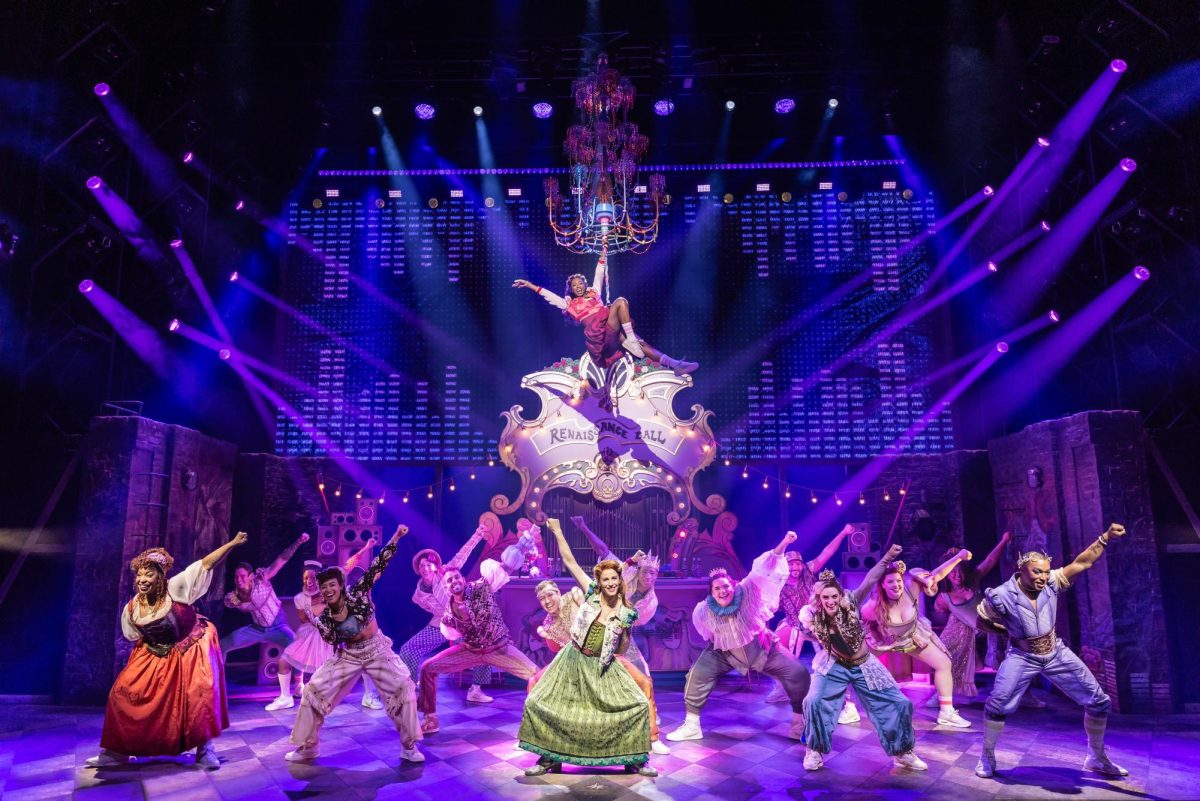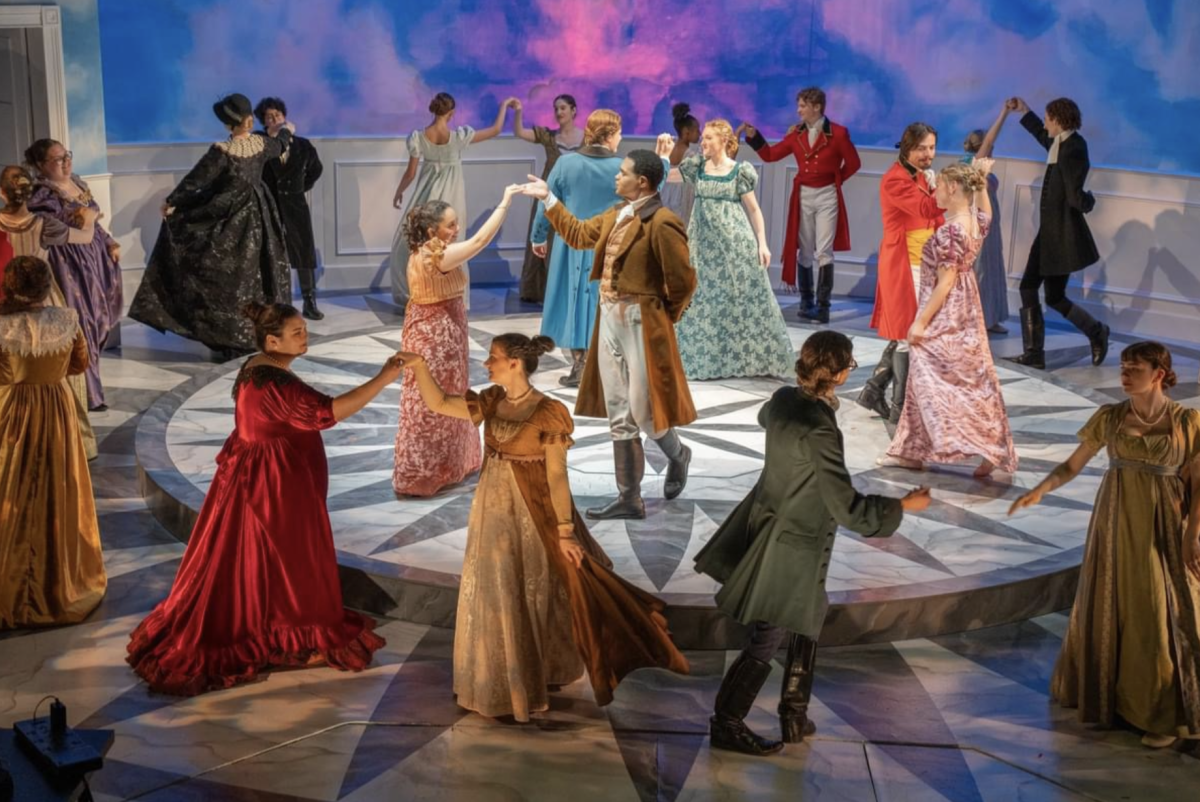"Leftovers." This word has been used to describe everything from cold pizza to microwaved meat loaf. And now it can apply to one more area of the good life: music.
It's a simple recipe — take a classic instrumental hook, mix it with some timeless rap lyrics and add a little DJ savvy. The product may be technically leftovers, but the sound is completely fresh.
What you have is generally known as a "mash-up," although other names include "bastard pop," "cut-up," "blend" and "edit." The basic definition is a combination of music from one song with lyrics from another. Usually, the songs are from completely different genres, and most combine rock music with rap lyrics.
This musical innovation goes back at least to 1956, when Bill Buchanan and Dickie Goodman released the pop single "The Flying Saucer." The song featured vocals from Orson Welles' fake emergency radio broadcast of "The War of the Worlds" mixed with humorous musical bits. But the term truly emerged into the public consciousness with the release of DJ Danger Mouse's The Grey Album in 2004.
The mash-up contained unauthorized samples of The Beatles' White Album, so Danger Mouse hoped to avoid legal repercussions by a small-scale production run. Nevertheless, EMI quickly took legal action to cease distribution, resulting in publicity that helped the album become a pop culture phenomenon.
Legal issues like this have relegated mash-up albums to the underground, resulting mainly in unofficial online publication and distribution. There have been exceptions, however, such as 2004's Collision Course, a legally-sanctioned mash-up of Jay-Z and Linkin Park songs.
Aspiring DJs continue to make underground mash-ups, the best of which are featured below.
The Grey Album
DJ Danger Mouse may not technically have been the first, but he kick-started the mash-up genre with this pairing of Jay-Z's Black Album with The Beatles' White Album. The Jay-Z mash-up has quickly become a fad, most likely thanks to an a cappella version of The Black Album commercially released to encourage remixes. DJs have paired Jay-Z's rhymes with everything from nerd-rockers Weezer (Jay-Zeezer: The Black and Blue Album) to indie heroes Pavement (Jay-Z vs. Pavement: The Slack Album). The Beatles have also been sampled elsewehere; Boston's DJ BC meshed Beatles' tunes with Beastie Boys raps to create The Beastles: Let It Beast.
But The Grey Album remains the gold standard, with The Beatles' classic melodies complimenting Jay-Z's vocals in a way few would have thought possible. Danger Mouse leaves the rhymes intact but tinkers heavily with the background, adding heavier bass and drums to The Beatles tracks. The result is a louder, more aggressive hip-hop version of classic tunes like "While My Guitar Gently Weeps" and "Rocky Raccoon."
With all the reworking of the original sounds, some of the songs seem to jerk along at times, but the rough edges are more endearing than annoying. Other songs flow effortlessly, such as "December 4th." The acoustic guitar riff from "Mother Nature's Son" matches Danger Mouse's shuffling beats perfectly, lending a new, haunting quality to the song.
Jay-Z is at the top of his game on this track as well, recounting his life with a gangster grit that plays off the sound clips of his mother describing him as a child.
The last line fades out dramatically, leaving the acoustic guitar to finish the song: "If you can't respect that your whole perspective is whack / maybe you love me when I fade to black."
Blue Eyes Meets Bed-Stuy
If you thought Jay-Z with The Beatles was risky, get a load of DJ Cappel & Smitty's pairing of original gangster Notorious B.I.G. and "ol' blue eyes" Frank Sinatra. Perhaps the most daring mash-up to date, the album somehow manages to put rap lyrics over classic swing-jazz.
Of course, this involves steamrolling the original swing rhythms with heavy hip-hop beats, but this adds rather than detracts from the jazzy melodies. Combined with the original charm, the new beats give the songs an innovative but retro feel.
The bossa nova of "A Day In the Life of a Fool" easily slides into place with the electronic groove, leaving the original piano and bass lines mostly intact. The vocals are sped-up, however, transforming Sinatra's baritone into a computerized-sounding tenor a la Gorillaz.
Biggie's "Everyday Struggle" fits the moody piano perfectly. His lazy but rhythmic flow seems to have a natural swing that compliments the original jazz. The heavy subject matter makes the song more than just a novelty, as he raps over the chorus: "I don't wanna live no more / sometimes I hear death knockin' on my front door."
The Infamous Bobb Deep: Queensbridge Meets Kingston
Blue Eyes Meets Bed-Stuy producer Jon Moskowitz teams up with DJ Swindle on this disc to mix reggae legend Bob Marley with hardcore rap duo Mobb Deep. The album sounds just as exotic as Blue Eyes, only in a completely different flavor.
DJ Swindle starts the party off immediately with the chorus to Marley's "Could You Be Loved" before a turntable scratch announces the arrival of a backbeat and the street stylings of Prodigy and Havoc.
The second track, "Shook Ones pt. 2," is an up-tempo reworking of "No Woman No Cry" that cuts out the chorus and most of the Marley vocals. The Mobb Deep refrain replaces the original: "'Cuz ain't no such things as halfway-crooks / scared to death, they scared to look, they shook." The track turns into an eerie rave-up, with the duo rapping over the echoing cries of Marley.
The rap is good, but the reggae bounce gives it something extra. The sunny bop of Marley and company contrasts with the dark, violent subject matter like the musical equivalent of sweet 'n' sour.
American Edit
Two anonymous DJs created this mash-up ode to Green Day under the name "Dean Gray," asking only that listeners donate money to Green Day-supported charities. The pair soon ran into trouble from Warner Bros., but not before distributing the album to an estimated 400,000-plus online fans.
The album doesn't go the usual route of putting a cappella rap lyrics over basically untouched musical backgrounds. Instead, American Edit combines effects-laden remixes of songs off Green Day's American Idiot with musical and non-musical sounds of all stripes.
Opening track "American Jesus" is an epic medley of Green Day songs that clocks in at almost nine minutes. The trippy, electronic versions of the songs mix and match Billy Joe Armstrong's vocals with everything from Bryan Adams' "Summer Of '69" to Johnny Cash's "Ring Of Fire." Appropriately, George W. Bush sound clips tie the whole song together.
"Boulevard of Broken Songs" turns "Boulevard of Broken Dreams" into a Green Day-Oasis duet, as Armstrong plays call-and-response with Liam Gallagher singing "Wonderwall." The song finally ends with the last lines of Aerosmith's "Dream On," but not before throwing in a few lines from Travis' "Writing To Reach You": "The radio is playing all the usual / What's a Wonderwall anyway?"
The finished product seems scatterbrained at times, but that's part of its charm. The effect is akin to pouring an entire bag of oddly-flavored jelly beans into your mouth all at once. The entire album continues in this vein, creating reworked, highly-danceable versions of the classic Green Day tunes while bringing in outside influences of all sorts. The only thing more amazing than Dean Gray's remixing ability is the fact that so many classic rock and pop tunes can fit together so well.
It's worth checking out. The emerging mash-up genre more than just recycled music, since the whole is often more than the sum of its parts. In other words, these "leftovers" are often better tasting than the original dish.







